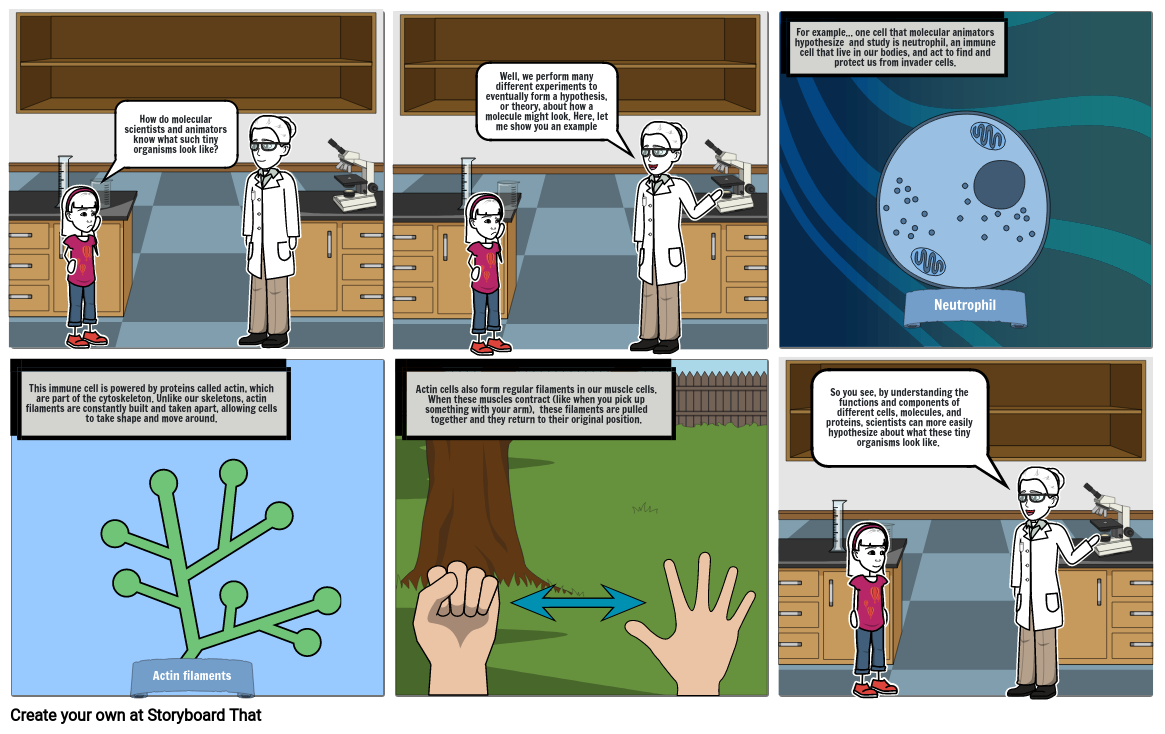1/18/22 Storyboard

Storyboard Text
- How do molecular scientists and animators know what such tiny organisms look like?
- Well, we perform many different experiments to eventually form a hypothesis, or theory, about how a molecule might look. Here, let me show you an example
- For example... one cell that molecular animators hypothesize and study is neutrophil, an immune cell that live in our bodies, and act to find and protect us from invader cells.
- Neutrophil
- This immune cell is powered by proteins called actin, which are part of the cytoskeleton. Unlike our skeletons, actin filaments are constantly built and taken apart, allowing cells to take shape and move around.
- Actin filaments
- Actin cells also form regular filaments in our muscle cells. When these muscles contract (like when you pick up something with your arm), these filaments are pulled together and they return to their original position.
- So you see, by understanding the functions and components of different cells, molecules, and proteins, scientists can more easily hypothesize about what these tiny organisms look like.
Over 30 Million Storyboards Created

